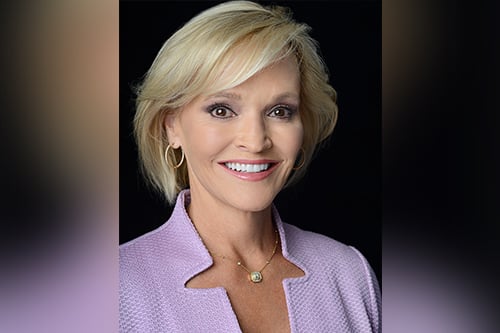

The excess and surplus lines (E&S) property insurance marketplace is buzzing with activity. With rates firming across multiple property segments, more and more submissions are flowing into the E&S market, creating opportunities for wholesale brokers and managing general agents (MGAs) to find creative insurance solutions for challenging risks.
A shifting rate environment tends to set the stage for differentiation. Insurers can gain a competitive advantage not only through the rate and coverage terms they’re willing to offer, but also through the efficiency and transparency of their distribution. These things need to be part of a company’s foundational building blocks, and not switched on as soon as somebody cries: ‘Hard market!’
“To shine in a soft market, you have to be really good at what you do,” said Brenda (Ballard) Austenfeld (pictured), national property practice leader at RT Specialty, the wholesale brokerage arm of Ryan Specialty Group. “At RT Specialty, we grew at a rapid pace in a soft market. That’s really due to the amount of talent that we have. Now, as the property market starts to transition and tighten, our reputation is well-established, meaning we can be the first port of call to help our retail brokers navigate their way through these more challenging market conditions.”
A few specific property segments are firming more than others. The habitational market, for example, has seen quite a dramatic shift in the past year. Historically, habitational risk has been an attractive line of business because of the premium it promises. However, that premium dollar sometimes blinds insurers to the losses that creep in and accumulate over time, according to Austenfeld. The market has reached a point in 2019 where the losses in habitational property risk have accumulated to the extent that players are exiting the market and underwriting has tightened in a much stricter way.
Other pockets of business to pose challenges, according to Austenfeld, include dealer’s open lot (which has been plagued by hail losses, especially in midwestern states), woodworking businesses, recyclers, food production businesses, and foundries. In terms of geography, it’s the western states like California, Colorado and Idaho that are causing the toughest challenges for property insurers after years of persistent wildfire losses.
“Some of the standard lines market have started to pull out of some of these more challenging segments, which is giving us an opportunity to be involved in a bigger way,”Austenfeld told Insurance Business, adding that even major global players like Lloyd’s, FM Global and AIG have started to tighten their capacity in certain property markets. “This has given us access to accounts that we haven’t seen in the past. As carriers restrict the limits they’re willing to offer, we’re able to assist our retail brokers in finding additional capacity and completing complex programs.”
As the property market tightens and retail brokers seek additional capacity for their insureds’ accounts, wholesale brokers can differentiate themselves by providing unique solutions, and offering them speed.
Austenfeld commented: “If all else is equal, speed takes the win. Our job is to find the insurance solution, and to do it in the quickest way we possibly can. There are only so many hours in the day, which means you’ve really got to fight for the attention of the underwriter. Speed in this business is about making sure our information is laid out in the most concise, yet detailed manner, so that our underwriting submission grabs the attention of the underwriter. If the submission quality is lacking, they won’t even look at the account – it will just shift to the bottom of the stack. The faster we can get the attention of the underwriters, the quicker we can turn around quotes for our retail brokers. That’s really important as they face the challenges of the firming market.”
